Yingfang Yuan
Navigating Public Sentiment in the Circular Economy through Topic Modelling and Hyperparameter Optimisation
May 16, 2024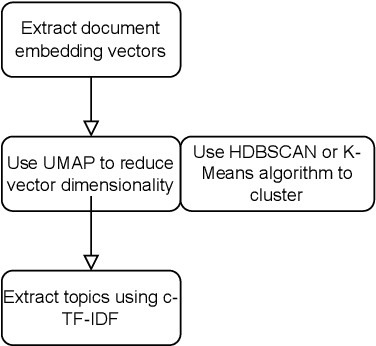
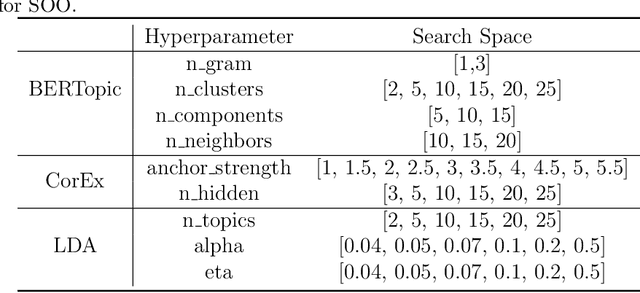
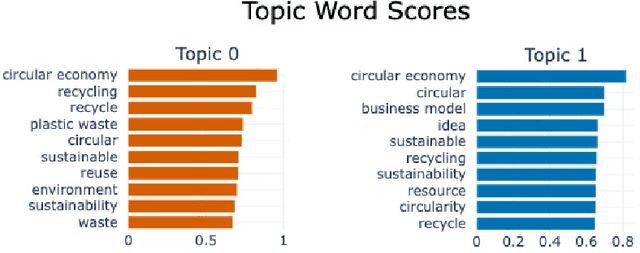
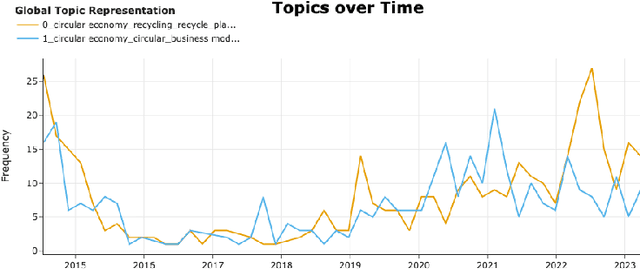
Abstract:To advance the circular economy (CE), it is crucial to gain insights into the evolution of public sentiments, cognitive pathways of the masses concerning circular products and digital technology, and recognise the primary concerns. To achieve this, we collected data related to the CE from diverse platforms including Twitter, Reddit, and The Guardian. This comprehensive data collection spanned across three distinct strata of the public: the general public, professionals, and official sources. Subsequently, we utilised three topic models on the collected data. Topic modelling represents a type of data-driven and machine learning approach for text mining, capable of automatically categorising a large number of documents into distinct semantic groups. Simultaneously, these groups are described by topics, and these topics can aid in understanding the semantic content of documents at a high level. However, the performance of topic modelling may vary depending on different hyperparameter values. Therefore, in this study, we proposed a framework for topic modelling with hyperparameter optimisation for CE and conducted a series of systematic experiments to ensure that topic models are set with appropriate hyperparameters and to gain insights into the correlations between the CE and public opinion based on well-established models. The results of this study indicate that concerns about sustainability and economic impact persist across all three datasets. Official sources demonstrate a higher level of engagement with the application and regulation of CE. To the best of our knowledge, this study is pioneering in investigating various levels of public opinions concerning CE through topic modelling with the exploration of hyperparameter optimisation.
SAIS: A Novel Bio-Inspired Artificial Immune System Based on Symbiotic Paradigm
Feb 11, 2024Abstract:We propose a novel type of Artificial Immune System (AIS): Symbiotic Artificial Immune Systems (SAIS), drawing inspiration from symbiotic relationships in biology. SAIS parallels the three key stages (i.e., mutualism, commensalism and parasitism) of population updating from the Symbiotic Organisms Search (SOS) algorithm. This parallel approach effectively addresses the challenges of large population size and enhances population diversity in AIS, which traditional AIS and SOS struggle to resolve efficiently. We conducted a series of experiments, which demonstrated that our SAIS achieved comparable performance to the state-of-the-art approach SOS and outperformed other popular AIS approaches and evolutionary algorithms across 26 benchmark problems. Furthermore, we investigated the problem of parameter selection and found that SAIS performs better in handling larger population sizes while requiring fewer generations. Finally, we believe SAIS, as a novel bio-inspired and immune-inspired algorithm, paves the way for innovation in bio-inspired computing with the symbiotic paradigm.
FACE: Evaluating Natural Language Generation with Fourier Analysis of Cross-Entropy
May 18, 2023Abstract:Measuring the distance between machine-produced and human language is a critical open problem. Inspired by empirical findings from psycholinguistics on the periodicity of entropy in language, we propose FACE, a set of metrics based on Fourier Analysis of the estimated Cross-Entropy of language, for measuring the similarity between model-generated and human-written languages. Based on an open-ended generation task and the experimental data from previous studies, we find that FACE can effectively identify the human-model gap, scales with model size, reflects the outcomes of different sampling methods for decoding, correlates well with other evaluation metrics and with human judgment scores. FACE is computationally efficient and provides intuitive interpretations.
PaCaNet: A Study on CycleGAN with Transfer Learning for Diversifying Fused Chinese Painting and Calligraphy
Feb 01, 2023

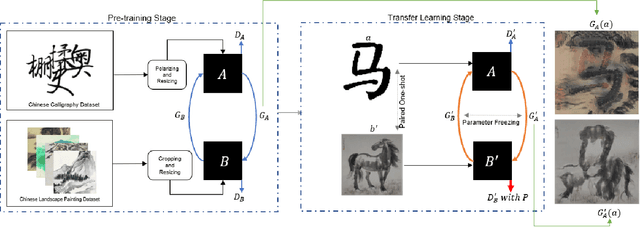
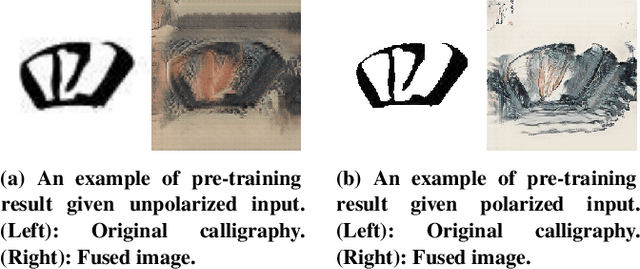
Abstract:AI-Generated Content (AIGC) has recently gained a surge in popularity, powered by its high efficiency and consistency in production, and its capability of being customized and diversified. The cross-modality nature of the representation learning mechanism in most AIGC technology allows for more freedom and flexibility in exploring new types of art that would be impossible in the past. Inspired by the pictogram subset of Chinese characters, we proposed PaCaNet, a CycleGAN-based pipeline for producing novel artworks that fuse two different art types, traditional Chinese painting and calligraphy. In an effort to produce stable and diversified output, we adopted three main technical innovations: 1. Using one-shot learning to increase the creativity of pre-trained models and diversify the content of the fused images. 2. Controlling the preference over generated Chinese calligraphy by freezing randomly sampled parameters in pre-trained models. 3. Using a regularization method to encourage the models to produce images similar to Chinese paintings. Furthermore, we conducted a systematic study to explore the performance of PaCaNet in diversifying fused Chinese painting and calligraphy, which showed satisfying results. In conclusion, we provide a new direction of creating arts by fusing the visual information in paintings and the stroke features in Chinese calligraphy. Our approach creates a unique aesthetic experience rooted in the origination of Chinese hieroglyph characters. It is also a unique opportunity to delve deeper into traditional artwork and, in doing so, to create a meaningful impact on preserving and revitalizing traditional heritage.
Which Hyperparameters to Optimise? An Investigation of Evolutionary Hyperparameter Optimisation in Graph Neural Network For Molecular Property Prediction
Apr 14, 2021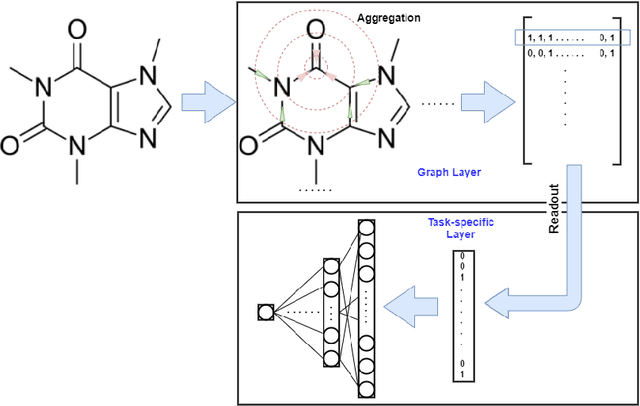
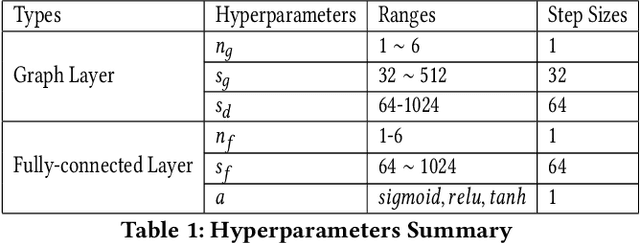
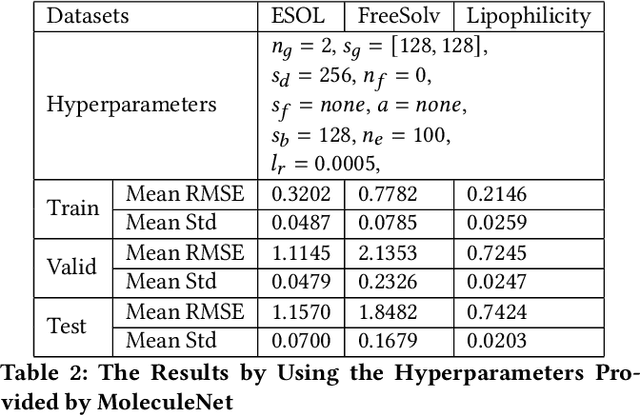
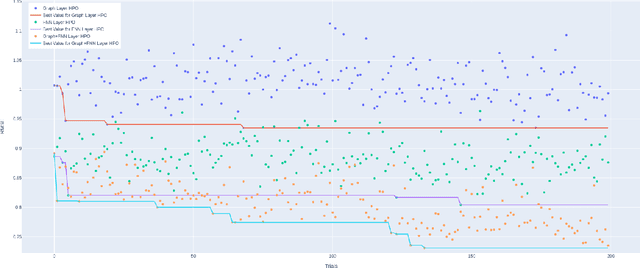
Abstract:Recently, the study of graph neural network (GNN) has attracted much attention and achieved promising performance in molecular property prediction. Most GNNs for molecular property prediction are proposed based on the idea of learning the representations for the nodes by aggregating the information of their neighbor nodes (e.g. atoms). Then, the representations can be passed to subsequent layers to deal with individual downstream tasks. Therefore, the architectures of GNNs can be considered as being composed of two core parts: graph-related layers and task-specific layers. Facing real-world molecular problems, the hyperparameter optimization for those layers are vital. Hyperparameter optimization (HPO) becomes expensive in this situation because evaluating candidate solutions requires massive computational resources to train and validate models. Furthermore, a larger search space often makes the HPO problems more challenging. In this research, we focus on the impact of selecting two types of GNN hyperparameters, those belonging to graph-related layers and those of task-specific layers, on the performance of GNN for molecular property prediction. In our experiments. we employed a state-of-the-art evolutionary algorithm (i.e., CMA-ES) for HPO. The results reveal that optimizing the two types of hyperparameters separately can gain the improvements on GNNs' performance, but optimising both types of hyperparameters simultaneously will lead to predominant improvements. Meanwhile, our study also further confirms the importance of HPO for GNNs in molecular property prediction problems.
A Genetic Algorithm with Tree-structured Mutation for Hyperparameter Optimisation of Graph Neural Networks
Feb 24, 2021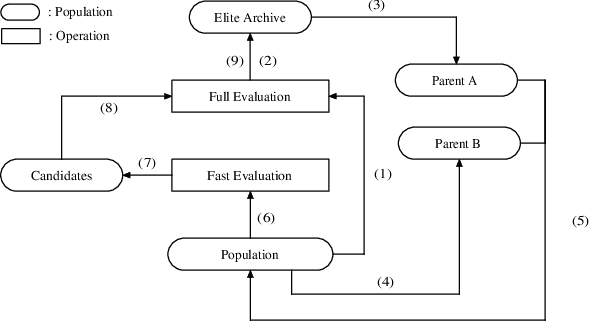
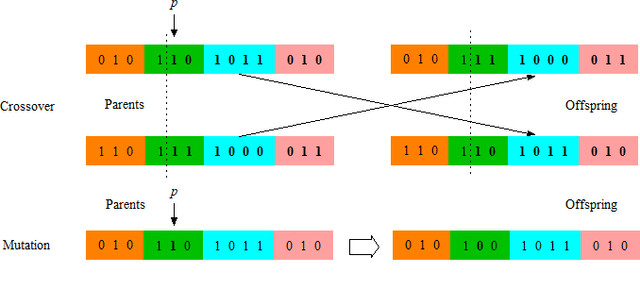
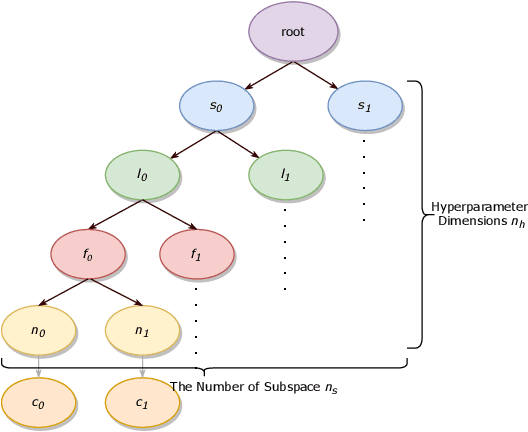
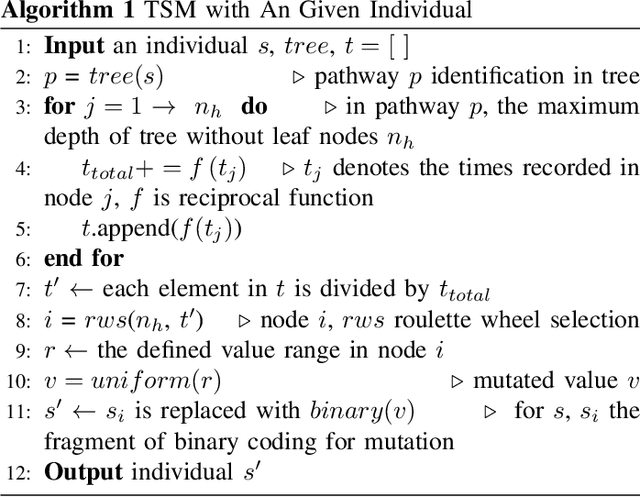
Abstract:In recent years, graph neural networks (GNNs) have gained increasing attention, as they possess excellent capability of processing graph-related problems. In practice, hyperparameter optimisation (HPO) is critical for GNNs to achieve satisfactory results, but this process is costly because the evaluations of different hyperparameter settings require excessively training many GNNs. Many approaches have been proposed for HPO which aims to identify promising hyperparameters efficiently. In particular, genetic algorithm (GA) for HPO has been explored, which treats GNNs as a black-box model, of which only the outputs can be observed given a set of hyperparameters. However, because GNN models are extremely sophisticated and the evaluations of hyperparameters on GNNs are expensive, GA requires advanced techniques to balance the exploration and exploitation of the search and make the optimisation more effective given limited computational resources. Therefore, we proposed a tree-structured mutation strategy for GA to alleviate this issue. Meanwhile, we reviewed the recent HPO works which gives the room to the idea of tree-structure to develop, and we hope our approach can further improve these HPO methods in the future.
A Systematic Comparison Study on Hyperparameter Optimisation of Graph Neural Networks for Molecular Property Prediction
Feb 08, 2021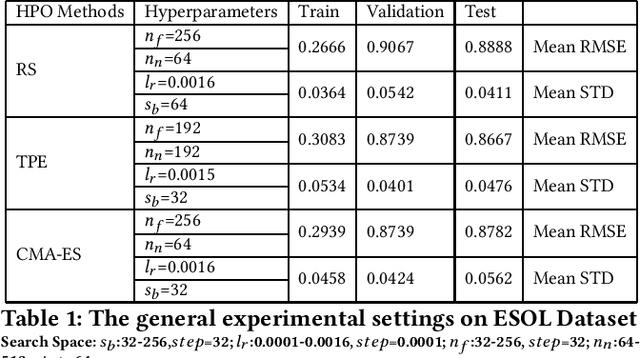
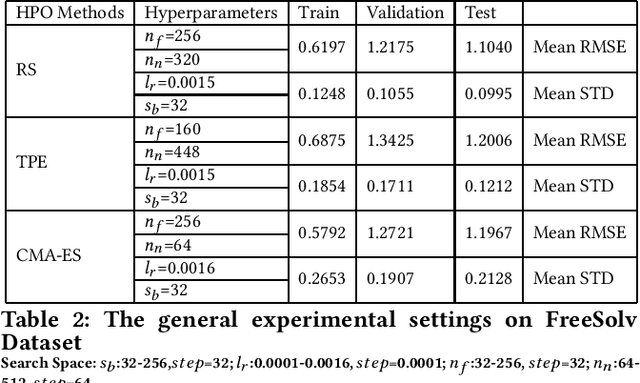
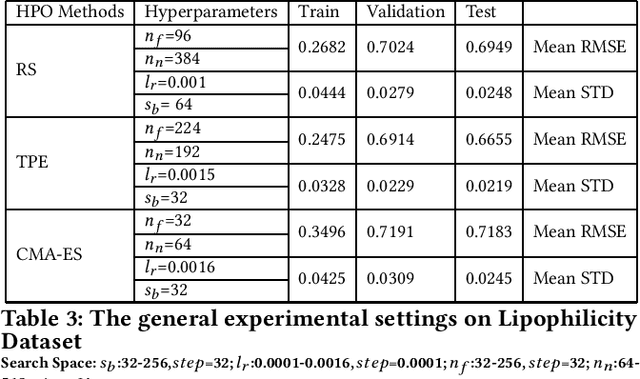
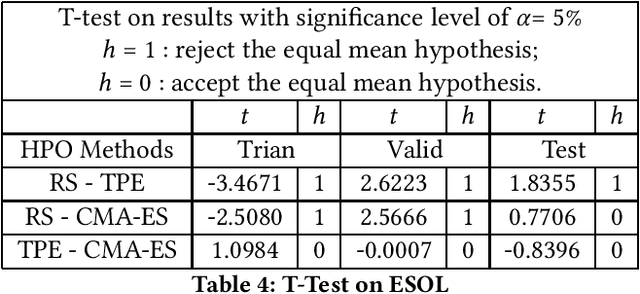
Abstract:Graph neural networks (GNNs) have been proposed for a wide range of graph-related learning tasks. In particular, in recent years there has been an increasing number of GNN systems that were applied to predict molecular properties. However, in theory, there are infinite choices of hyperparameter settings for GNNs, and a direct impediment is to select appropriate hyperparameters to achieve satisfactory performance with lower computational cost. Meanwhile, the sizes of many molecular datasets are far smaller than many other datasets in typical deep learning applications, and most hyperparameter optimization (HPO) methods have not been explored in terms of their efficiencies on such small datasets in molecular domain. In this paper, we conducted a theoretical analysis of common and specific features for two state-of-the-art and popular algorithms for HPO: TPE and CMA-ES, and we compared them with random search (RS), which is used as a baseline. Experimental studies are carried out on several benchmarks in MoleculeNet, from different perspectives to investigate the impact of RS, TPE, and CMA-ES on HPO of GNNs for molecular property prediction. In our experiments, we concluded that RS, TPE, and CMA-ES have their individual advantages in tackling different specific molecular problems. Finally, we believe our work will motivate further research on GNN as applied to molecular machine learning problems in chemistry and materials sciences.
A Novel Genetic Algorithm with Hierarchical Evaluation Strategy for Hyperparameter Optimisation of Graph Neural Networks
Jan 26, 2021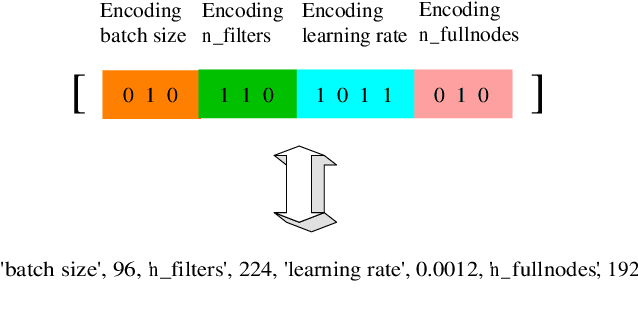
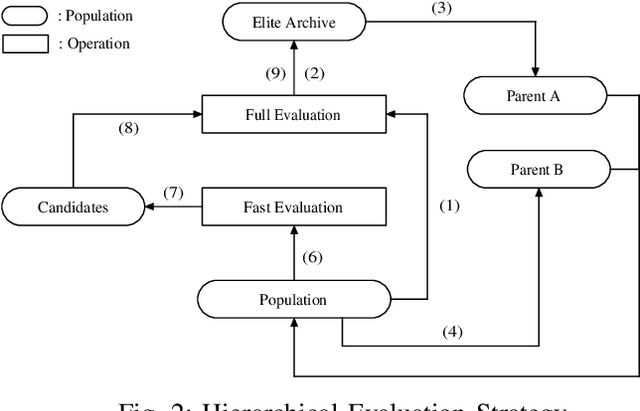
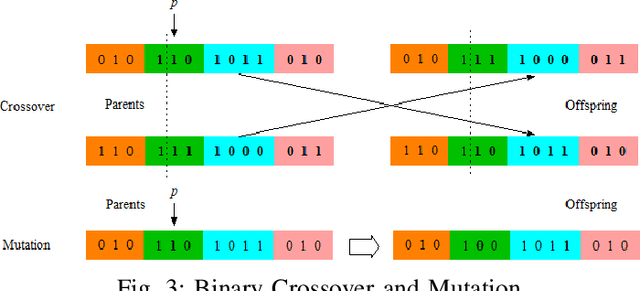
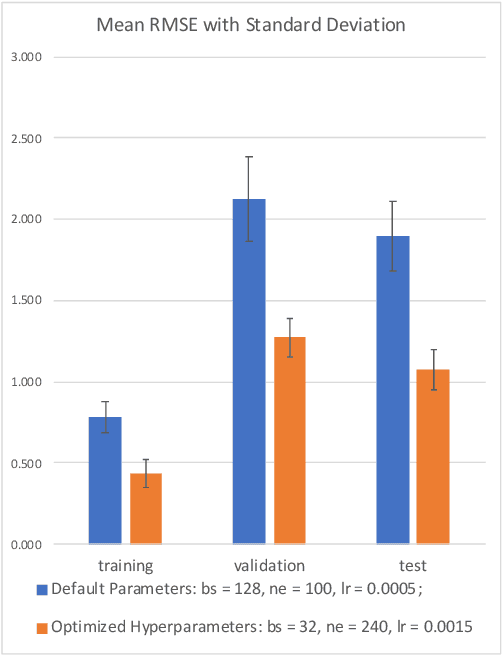
Abstract:Graph representation of structured data can facilitate the extraction of stereoscopic features, and it has demonstrated excellent ability when working with deep learning systems, the so-called Graph Neural Networks (GNNs). Choosing a promising architecture for constructing GNNs can be transferred to a hyperparameter optimisation problem, a very challenging task due to the size of the underlying search space and high computational cost for evaluating candidate GNNs. To address this issue, this research presents a novel genetic algorithm with a hierarchical evaluation strategy (HESGA), which combines the full evaluation of GNNs with a fast evaluation approach. By using full evaluation, a GNN is represented by a set of hyperparameter values and trained on a specified dataset, and root mean square error (RMSE) will be used to measure the quality of the GNN represented by the set of hyperparameter values (for regression problems). While in the proposed fast evaluation process, the training will be interrupted at an early stage, the difference of RMSE values between the starting and interrupted epochs will be used as a fast score, which implies the potential of the GNN being considered. To coordinate both types of evaluations, the proposed hierarchical strategy uses the fast evaluation in a lower level for recommending candidates to a higher level, where the full evaluation will act as a final assessor to maintain a group of elite individuals. To validate the effectiveness of HESGA, we apply it to optimise two types of deep graph neural networks. The experimental results on three benchmark datasets demonstrate its advantages compared to Bayesian hyperparameter optimization.
 Add to Chrome
Add to Chrome Add to Firefox
Add to Firefox Add to Edge
Add to Edge